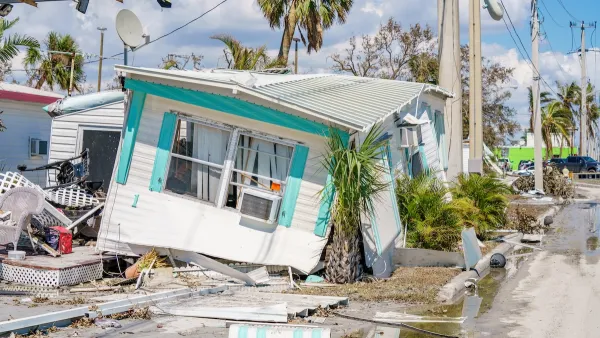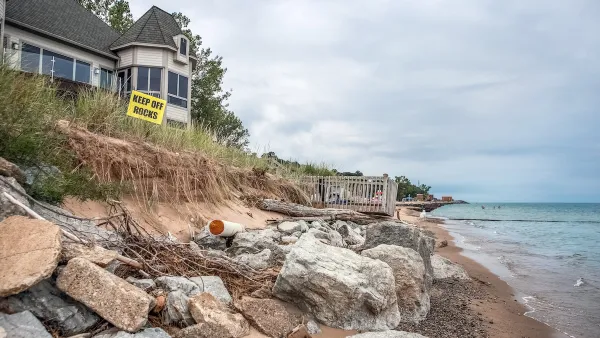The agency's report shows that inland-dwellers are just as likely as coastal types to be deeply affected by climate change.

Although those in the federal government who are critical of the science behind climate change have not retreated, the U.S. Army Corps of Engineers just released a comprehensive report “intended to help the 27 million people who live in 2,400 urban and rural communities across 204,000 square miles understand that the Ohio River and its tributaries will not escape climate disruption.”
James Bruggers, a reporter for The Courier-Journal of Louisville outlines major findings:
"► Increasingly potent storms will cause river levels to surge, risking major floods in low-lying cities like Louisville.
► More frequent and heavy droughts will likely dramatically reduce river volumes in some spots, putting in jeopardy drinking water supplies, barge traffic and power generation that relies on abundant water.
► Rising temperates and wild swings in river flows threaten to wipe out fish and other aquatic life.
► Economic losses could be ten times or more greater than from any other resource-based threats from the past."
Flooding in the Ohio River Valley, as well as heroic efforts to prevent it, is nothing new to the region. But the urgent tone of the report is worth noting. Brugger writes:
“The study concludes that the most dramatic effects are likely two decades away. But changes are happening more quickly than previously thought, and the time to start bracing for ‘a new normal’ and making plans to adapt is now.”
FULL STORY: Army engineers warn of brutal future for Ohio River region from climate change

National Parks Layoffs Will Cause Communities to Lose Billions
Thousands of essential park workers were laid off this week, just before the busy spring break season.

Retro-silient?: America’s First “Eco-burb,” The Woodlands Turns 50
A master-planned community north of Houston offers lessons on green infrastructure and resilient design, but falls short of its founder’s lofty affordability and walkability goals.

Delivering for America Plan Will Downgrade Mail Service in at Least 49.5 Percent of Zip Codes
Republican and Democrat lawmakers criticize the plan for its disproportionate negative impact on rural communities.

Test News Post 1
This is a summary

Test News Headline 46
Test for the image on the front page.

Balancing Bombs and Butterflies: How the National Guard Protects a Rare Species
The National Guard at Fort Indiantown Gap uses GIS technology and land management strategies to balance military training with conservation efforts, ensuring the survival of the rare eastern regal fritillary butterfly.
Urban Design for Planners 1: Software Tools
This six-course series explores essential urban design concepts using open source software and equips planners with the tools they need to participate fully in the urban design process.
Planning for Universal Design
Learn the tools for implementing Universal Design in planning regulations.
EMC Planning Group, Inc.
Planetizen
Planetizen
Mpact (formerly Rail~Volution)
Great Falls Development Authority, Inc.
HUDs Office of Policy Development and Research
NYU Wagner Graduate School of Public Service





























